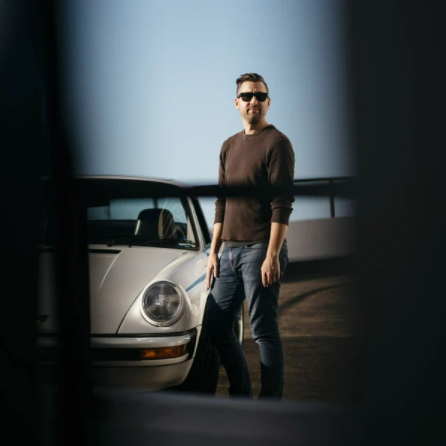- 07/30/2021
- 8 Min Read
- By: Kevin McCauley
BMW E46 M3xi - An M3-Powered BMW Rally Wagon, Ready For (Almost) Anything
Oregon has over 70,000 miles of forest roads. For the last seven years, those unpaved routes have been taunting Daniel Sloan, just out of reach, as he traversed the farthest reaches of the state in his BMW M3 convertible.
He knew an off-roader would give him access to the untapped parts of Oregon, so he found a used Land Rover LR3 and got it sorted for long-distance trips. It fit the role but still didn't scratch the itch that an M3 was so perfectly tuned to scratch: driver engagement. A long drive through windy scenery isn't as fun if you're lamenting all the sweeping corners along the way that would have been perfect in a sports car.
Many people would let this go: they are, after all, two vehicles for two different purposes. And Daniel might have let it go as well until he came across a listing for an all-wheel drive BMW 3-series wagon with the heart of an M3 swapped in. He must have sent me the listing three times. He couldn't let it go.
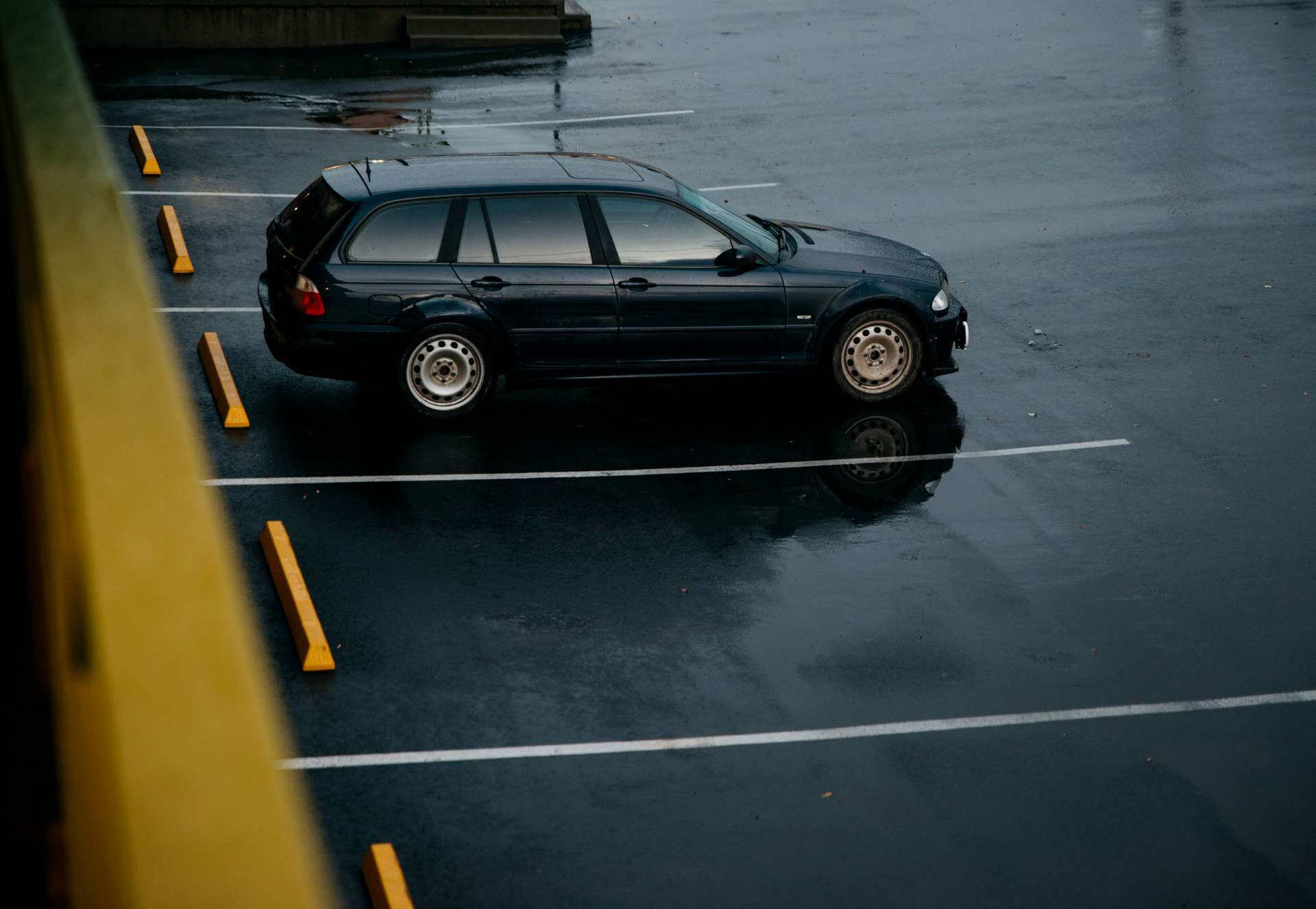
"I'd be lying if I said I had been shopping for an AWD S54-swapped E46 Touring when I found this car," Sloan says. "I had been aware of a few M3 Touring creations up to this point, but they were all RWD. I didn't know the S54 was even compatible with the E46 AWD drivetrain."
While visiting a friend in Denver, he couldn't help himself and checked it out in person. He immediately had a vision of what it could be: an M3 Touring rally-inspired adventuremobile.
Soon, the S54-swapped 2001 BMW 325xi Touring was his, and it didn't take much convincing to get me to join him for the drive home to Oregon. The consignment shop specialized in BMWs and had looked it over thoroughly. Daniel figured that maybe not every accessory would work — it was someone's project car, after all—but wasn't too worried about the drivetrain.
"I've had 90k problem-free miles in the M3 convertible," he recalls. "So I've never worried about an S54 breaking before."
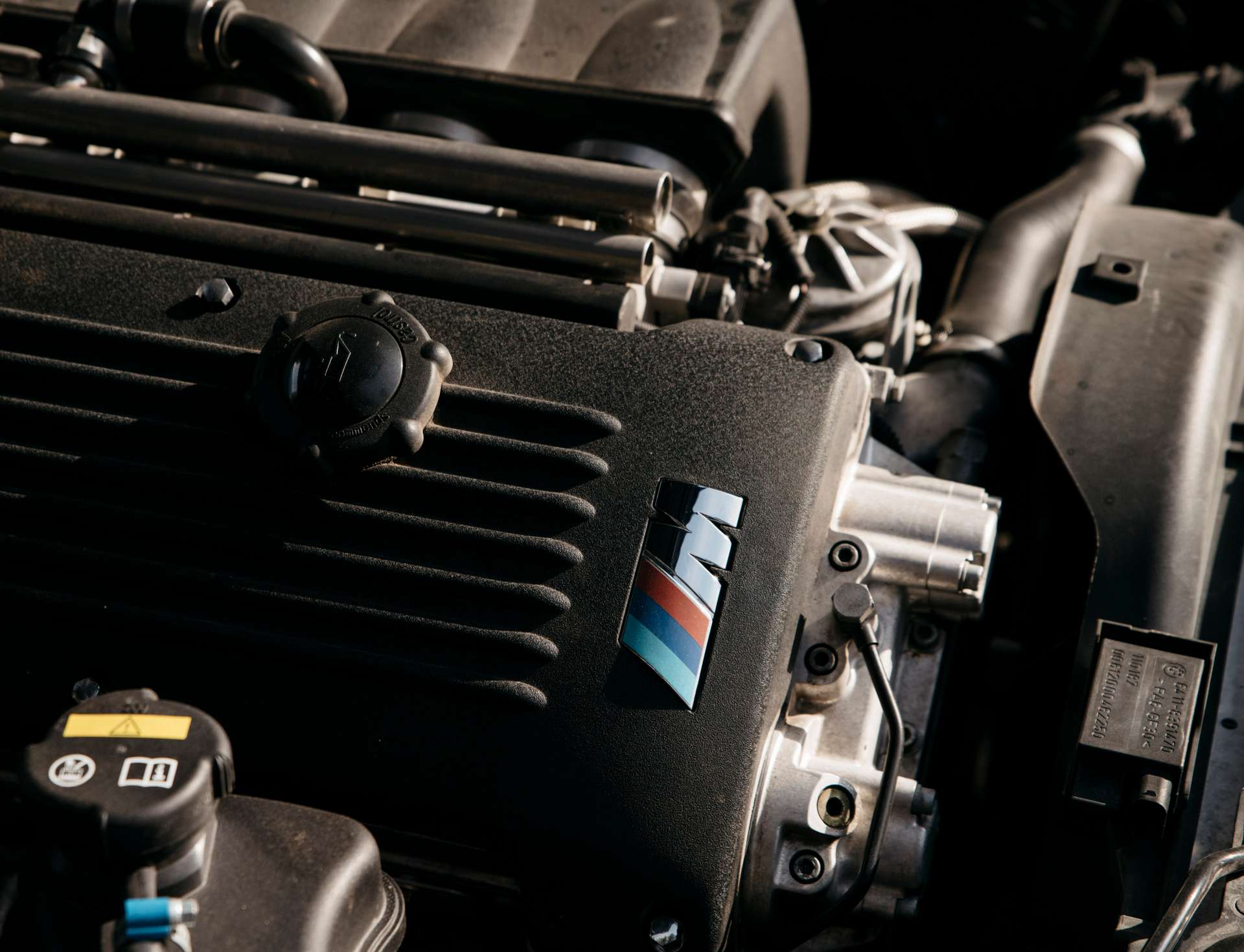
I met him in Denver, and we drove more than 1600 scenic, all-weather miles to Portland last spring. It functioned perfectly, but some pain points grew increasingly aggravating as the trip went on. It sat too low. The cruise control was broken. The exhaust was too loud. Aesthetically, the kidney grilles, taillights, and hood were wrong. It's not that the original builder didn't know what he was doing—he was, in fact, a BMW master technician. But it seems that instead of gathering all the right components, he grabbed what he already had access to. The radiator, for example, was just a random BMW radiator and had a janky toggle switch to switch on the fan from the center console. It was nothing that couldn't be fixed, but together, and with the other planned upgrades, it added up to a lot.
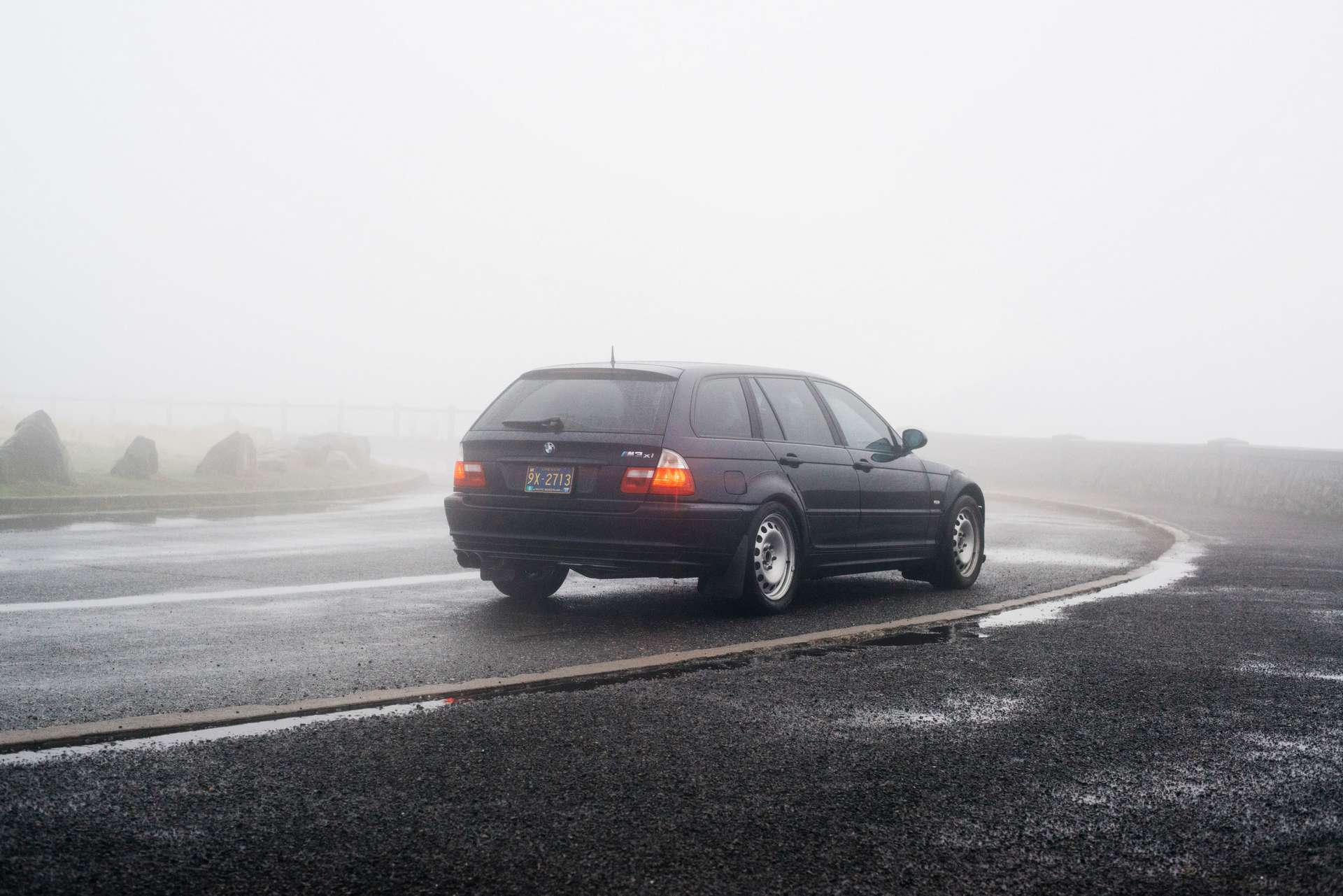
Within days of getting it home, Daniel dropped it off so that his mechanic at Rhom Innovations could begin the transformation process.
Over a year and a half of enhancements, fixes, headaches, and developments later, it's a considerably different package from when I last saw it. The KW V1 coilovers have been raised and the strut towers reinforced. A custom skid plate protects the front undercarriage, and a new Wavetrac LSD provides traction. After trying two different final drive differential ratios, he settled on 3.91 gearing to prioritize acceleration and responsiveness over loose surfaces.
Daniel didn't care for the tan interior, so he bought a donor E46 Touring with black trimmings and swapped between the two. The M3 seats came out of his own M3 coupe—and so did the steering wheel. A custom exhaust was fabricated, and BMW Style 12 wheels were fitted. And, of course, mudflaps and rally fog lights have been added as a hint to what this car is intended for.
It took longer than expected, but it promised to be worth the wait.
Day One
It's 7:40 AM, and Daniel scans over a white legal pad with his chaotically-jotted pre-trip checklist. Packed amongst our gear and luggage is a box of supplies to contend with anything we'll likely encounter over the next few days—an ice scraper, air compressor, tools, and plenty more, all sitting atop a new full-size spare. I've come to expect this level of preparedness, which is part of why I agreed to join him on another road trip. But there are things that no level of planning can equip you for.
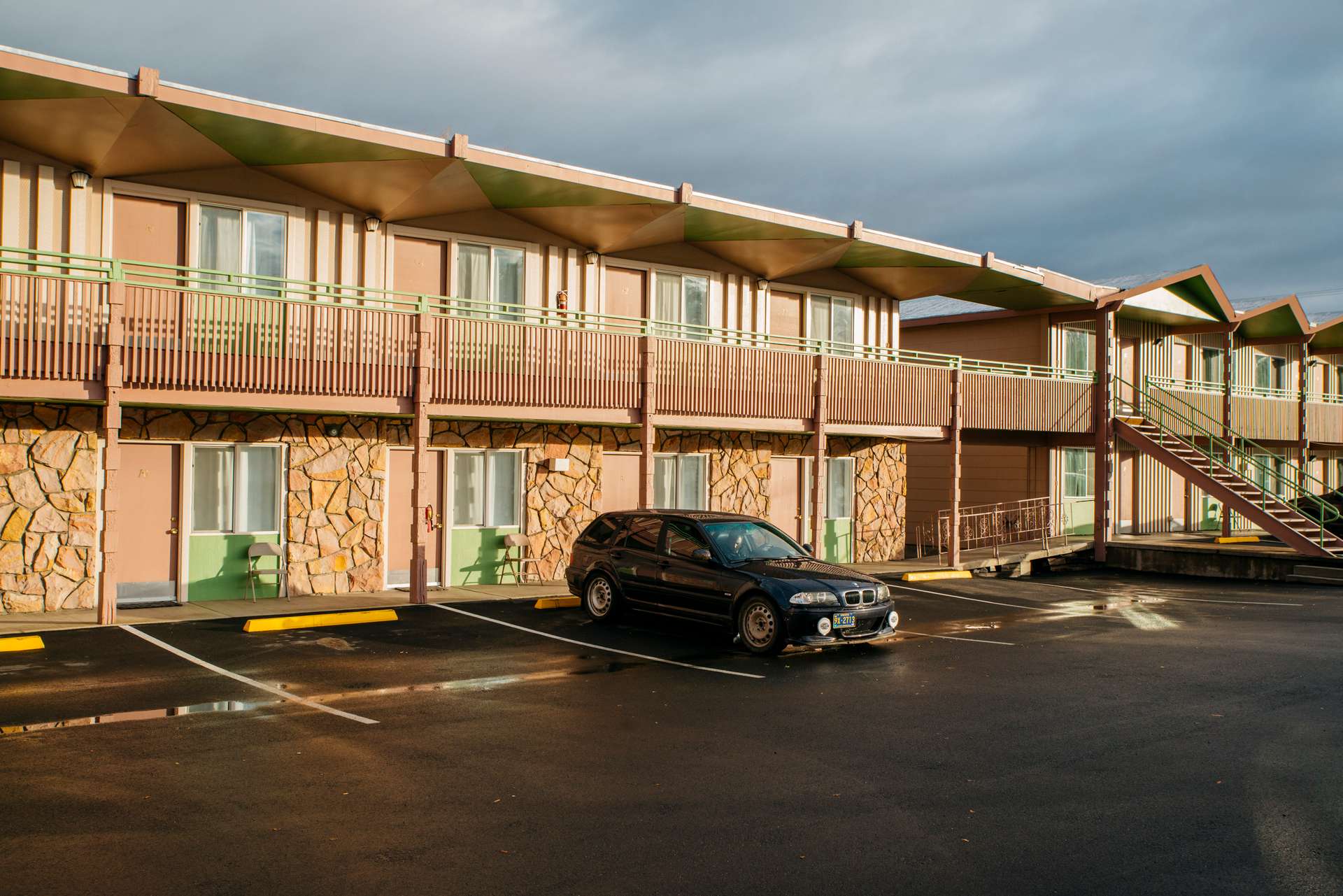
Our trip was to start in Portland, and end, eight days later, in Southern California. No interstates—just good roads, trails, photo stops, and points of interest along the way.
It was drizzling in Portland when we left but cleared up by the time we reached Rowena Crest, and the sun was out when we reached Cottonwood Canyon in Central Oregon. I never tire of the topographic diversity of Oregon: just an hour can take you from mountains to canyons, deserts, or plains, all with their own unique weather systems. The roads can feature spectacular elevation and bends, which the wagon tackles with incredible pace—it is still, for all intents and purposes, an E46 BMW M3.
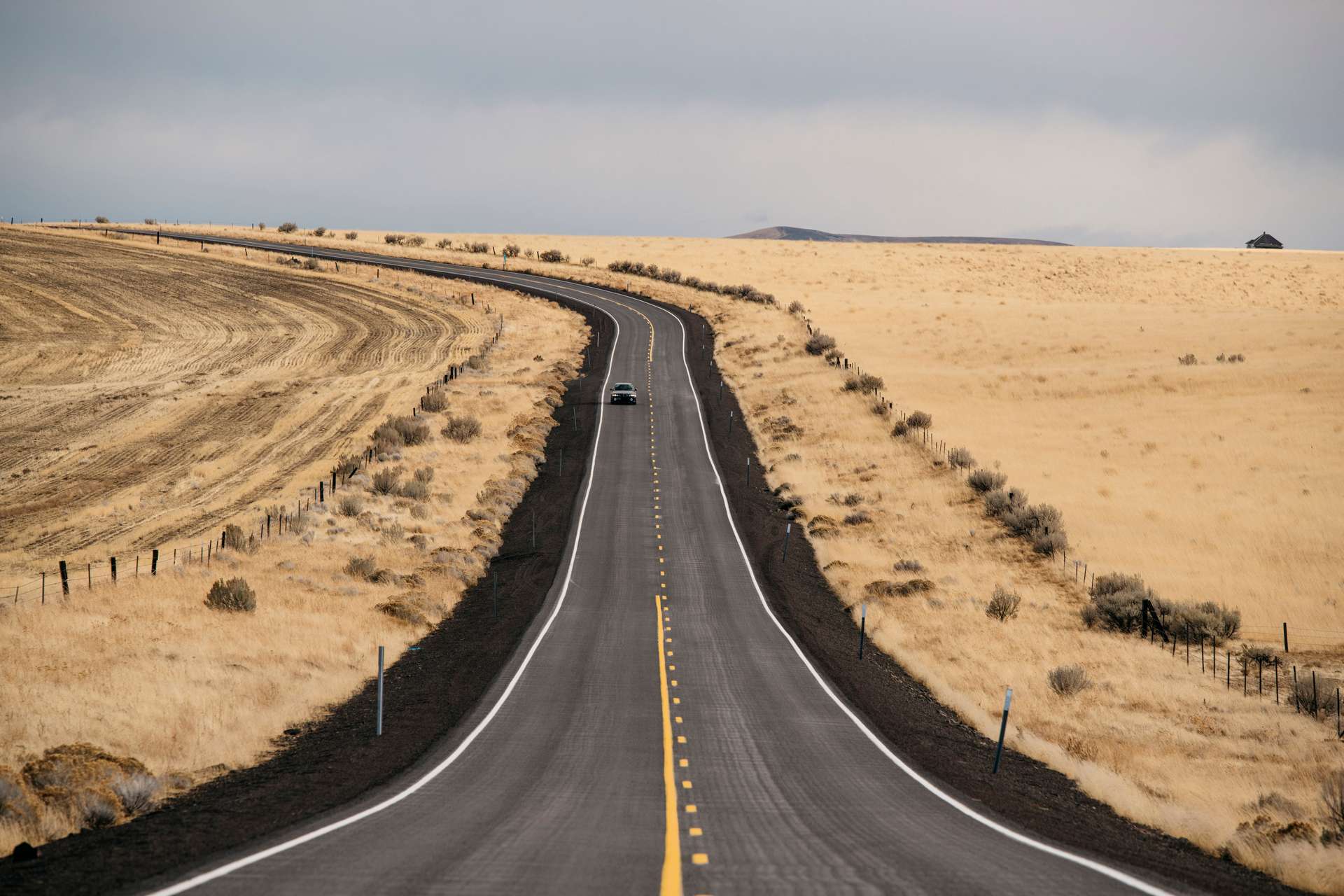
The steering isn't as communicative or quick as a "real" M3 because it has the 325xi steering rack, but it corners surprisingly well, and the limits of grip are respectable.
It's hard to get the car to understeer, even with the all-season snow-rated tires. I wasn't expecting the tires to perform as well as they do on pavement, but the Vredestein Quatrac 5 tackled every road condition we could throw at them.
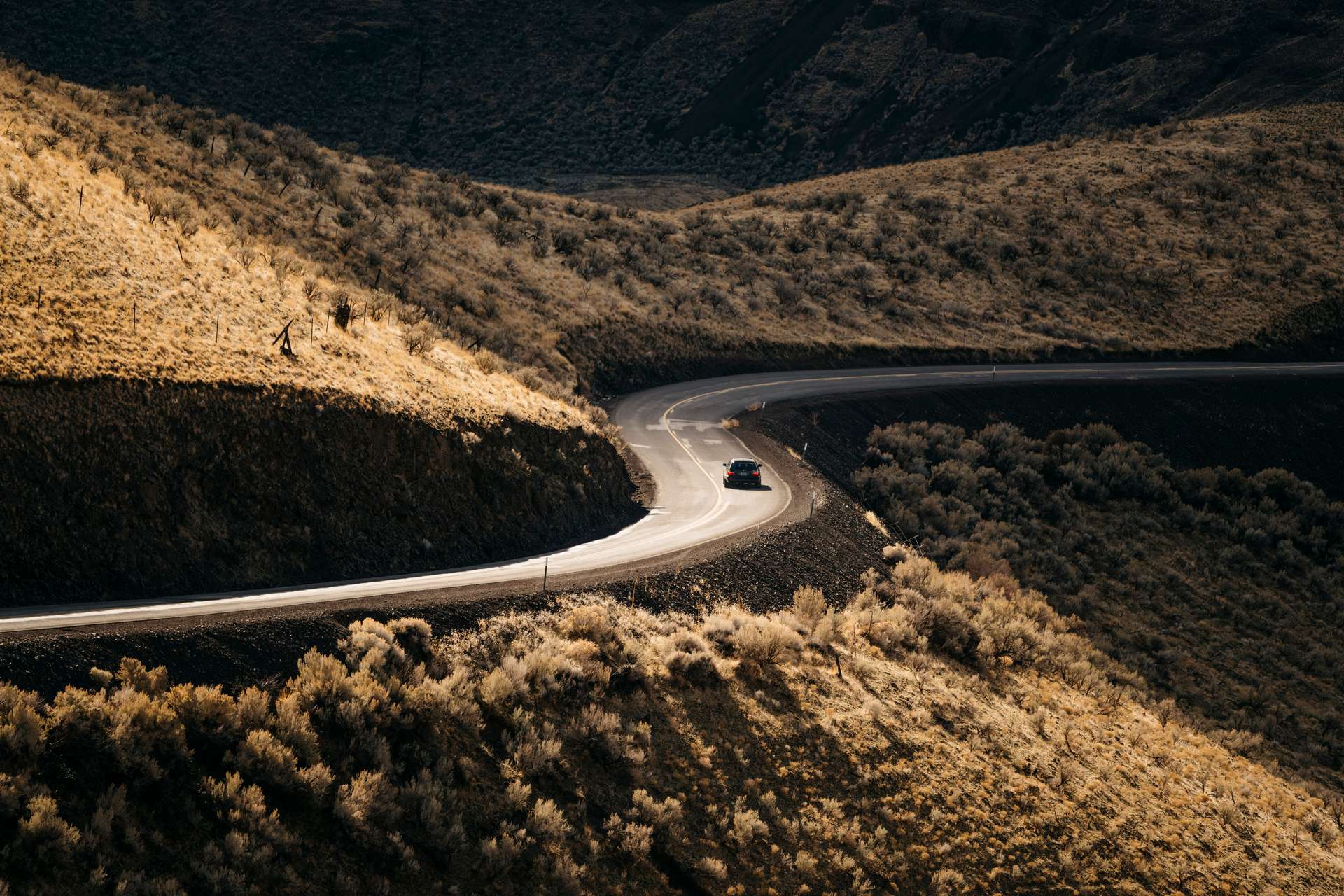
Ultimately, the wagon is lighter than Daniel's M3 convertible, so it feels more nimble in situations that aren't related to power delivery. The convertible feels less restricted power-wise, but it can't hide its increased weight or reduced rigidity.
We had mapped some gravel roads to check out, and our relaxed schedule allowed us to take every opportunity to explore them. Daniel found the inherent chassis balance and smooth power delivery gave the car a natural poise on loose surfaces, but the sensation of the all-wheel drive system slipping and re-gripping would take some adjusting to.
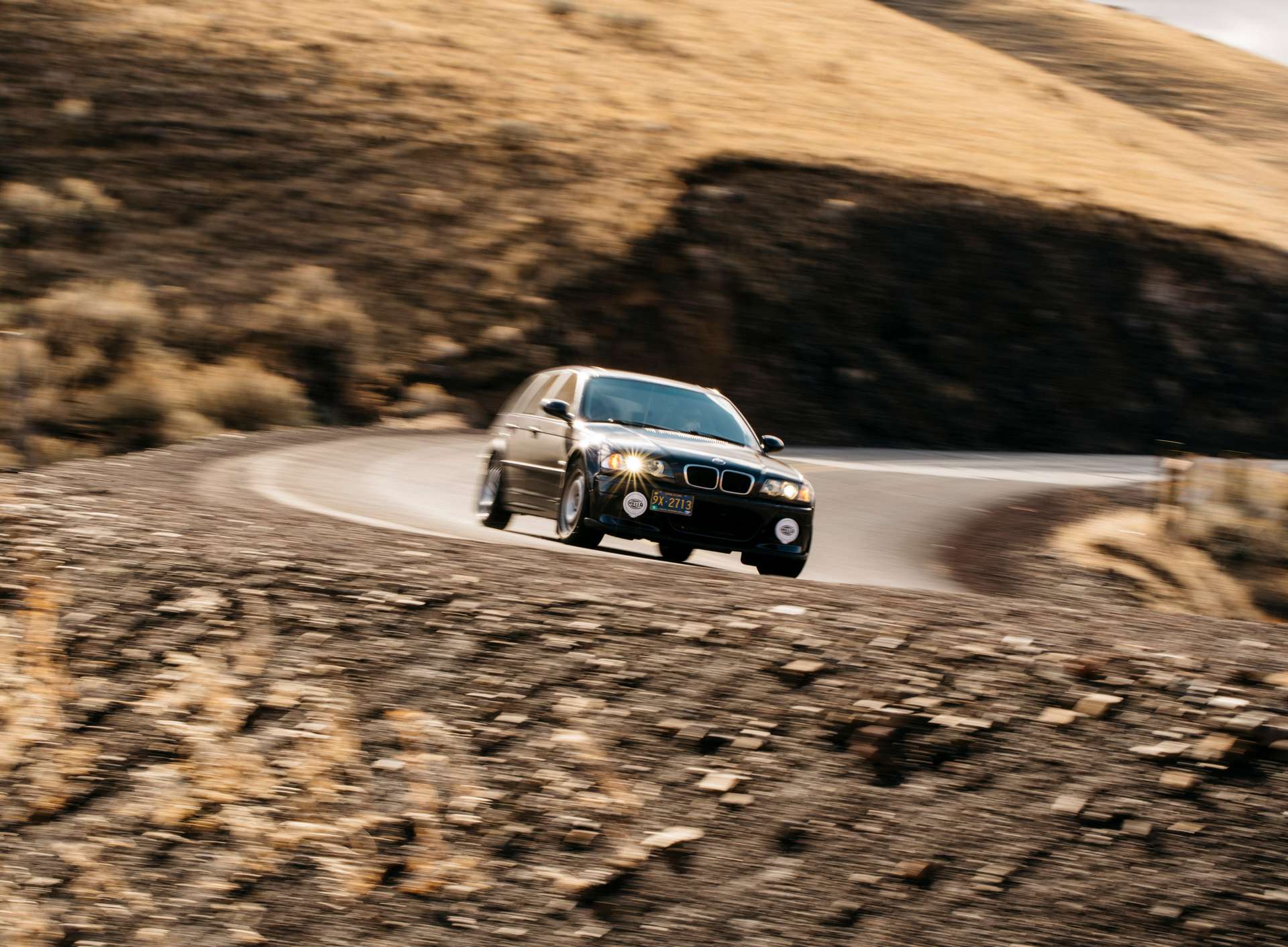
We arrived at the lodging we booked in the town of John Day just ahead of the early 4:30 sunset. Despite how one-of-a-kind this build is, I'm amazed by how comfortable the M3xi Touring is after a day in the saddle. The seats are comfortable and supportive, the ride is compliant, and road noise is filtered out. There aren't any squeaks from the trim—or even from our mountain of stuff in the cargo area. Unlike previous trips in the M3 convertible, my camera gear is painlessly accessible from the passenger side rear door. This was set to be our best road trip yet because we had the best possible tool for the job.
Looking at the maps for Day 2, it was about to get even better.
A Day in Dayville
9:38 AM
We had made it about 25 miles down South Fork road. This is the type of road the M3xi was built for—muddy, winding along a river, and flanked by spectacular scenery. There were no other vehicles for miles, and the unpaved surface was smooth and predictable.
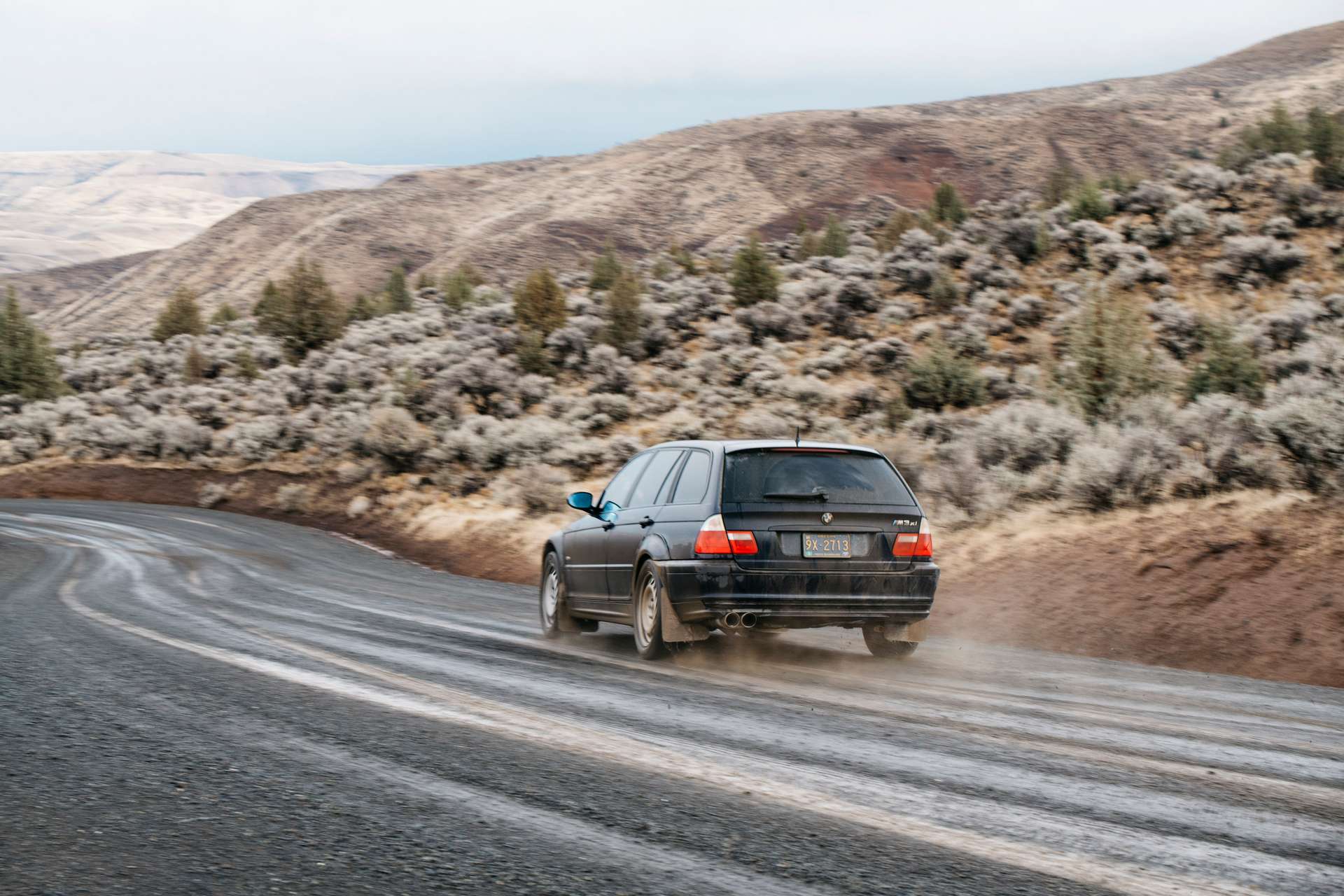
The suspension keeps the car flat around corners but is compliant enough to not rattle your teeth out on the gravel. Daniel found the handling balance is pretty neutral on pavement, but you start to feel the weight of the rear on loose surfaces, and it will start to come around with minimal steering input. It's disconcerting at first, but it's something you can adapt to.
The BMW S54 loves being above 5000rpm and pulls hard to the redline. The effect of this is enhanced by the shorter 3.91 differential ratio, which enables you to keep it in the powerband at reasonable speeds in first-through-third. The car feels slightly sluggish pulling out of tight corners because power is sent to both axles instead of just the rear—but the shorter gearing helps.
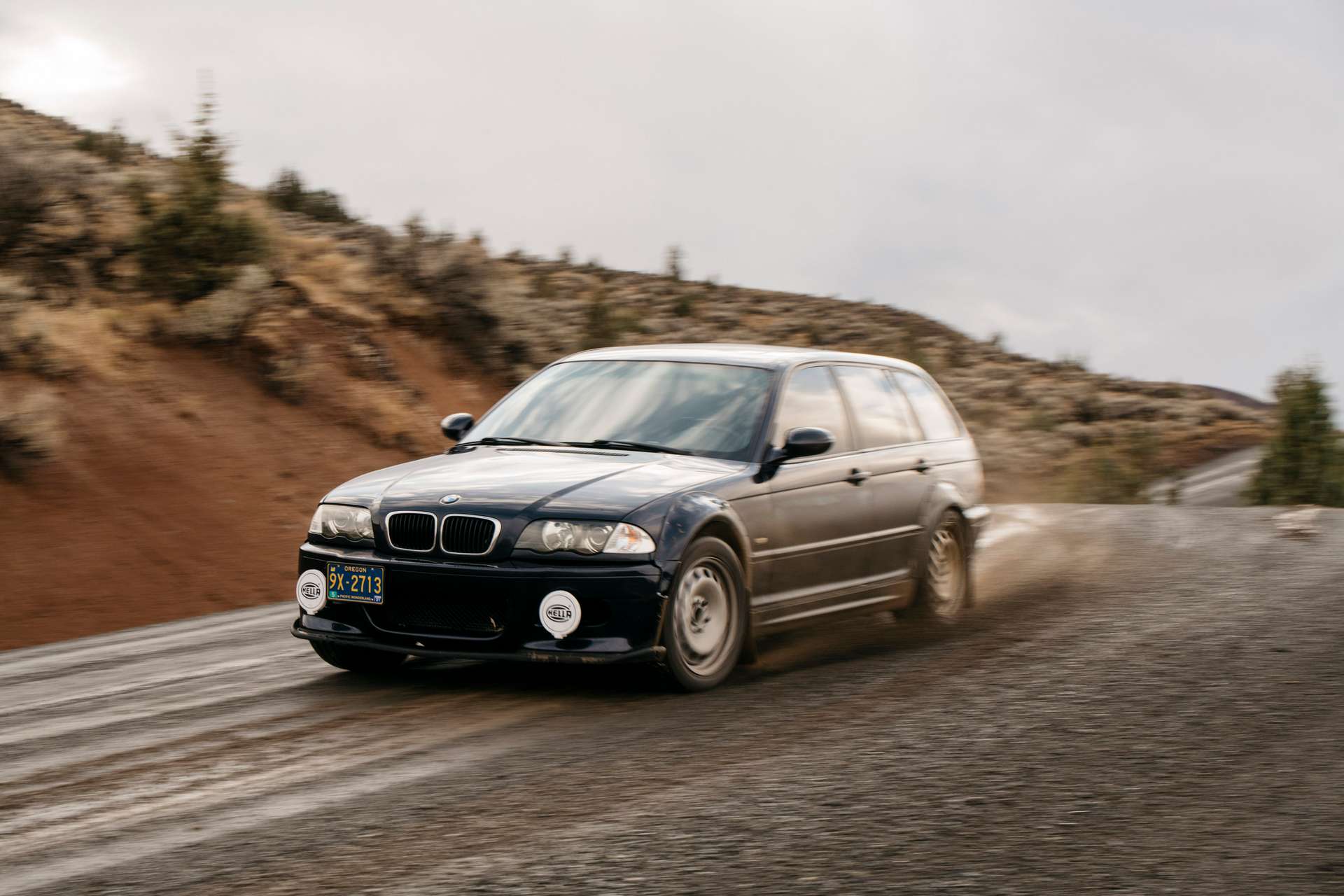
The exhaust sounds intoxicating, even if it's a bit loud at times. Daniel's driven more miles in S54-powered BMWs than anyone I know, and he insists, "it's hard to imagine a better sounding S54. It screams."
Just as Daniel started to find a groove sliding the 333-hp wagon, it happened: beneath the sonorous exhaust note, we began to hear a metallic clattering sound emitting from under the hood. We slowed to get a better listen and then stopped as a precaution. Visually, the motor looked and sounded okay at idle, but as I gently revved above 1500 RPM, the unhappy metallic knocks indicated a problem that would be impossible to ignore.
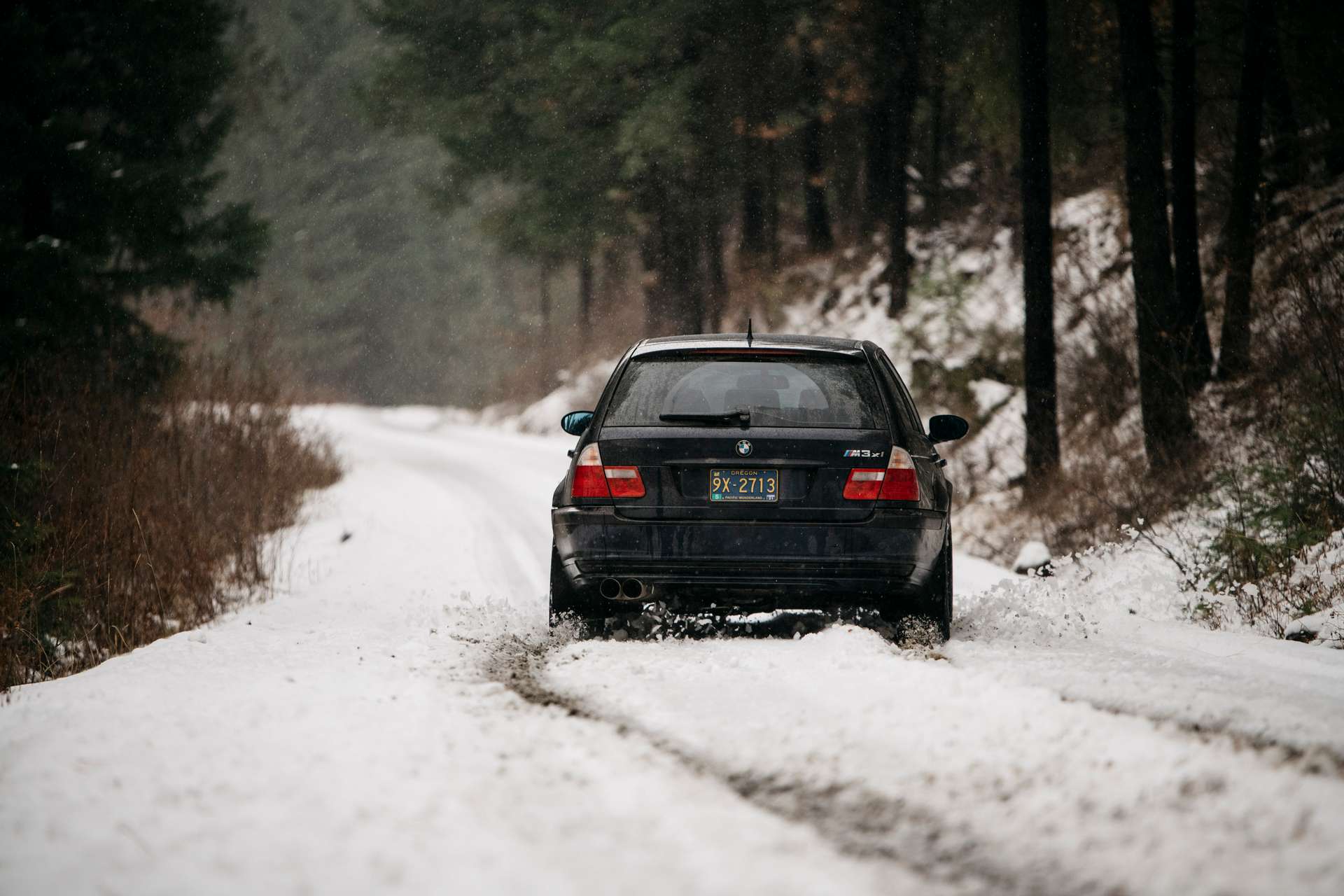
Whatever the issue was, it wouldn't be cured with a quart of oil or a roll of duct tape. We had a set of wrenches and sockets, but most of the supplies we'd packed were for warding off natural hazards: a flat tire, getting stuck, getting lost without food and water. Encountering a catastrophic problem from deep inside the engine wasn't something we had prepared for—it was never even a consideration.
In an instant, our eight-day road trip plan was over, and a new journey had begun: getting ourselves, our gear, and our car back to Portland. We limped back to the nearest town, keeping the revs under 2000rpm, and listening carefully for any changes to the sounds or drivetrain behavior.
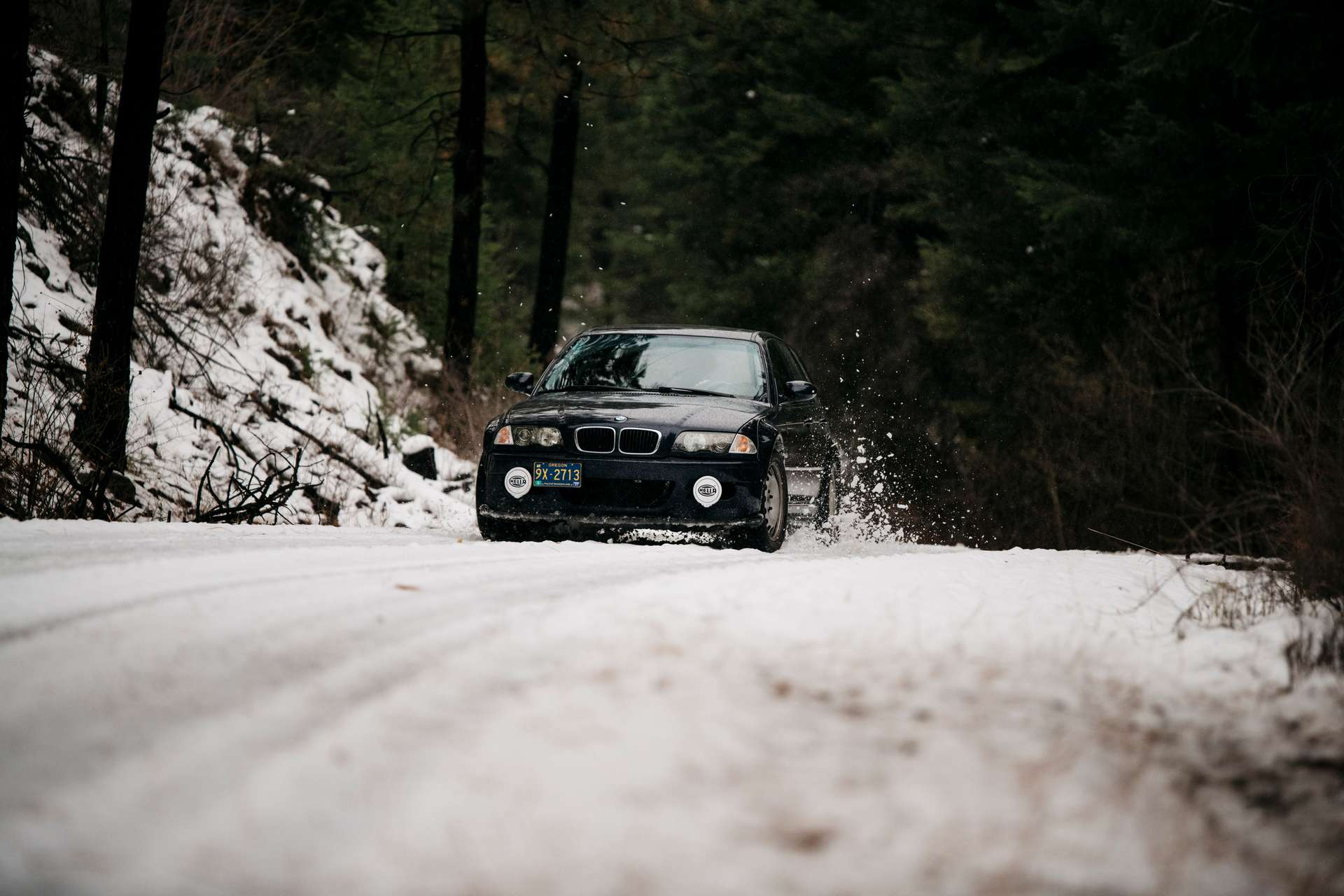
10:14 AM
Dayville—population 149—is not the best place to have a catastrophic breakdown. We were about five hours from Portland and two and a half hours from Bend. Dayville doesn't have rental cars or tow trucks, and neither does the next town up the road or the next town after that.
We called Daniel's mechanic in Portland to describe our situation, and to see if he had any connections for roadside assistance in this part of the state. Help would be hard to come by on a Saturday, and although he said it would be impossible to diagnose our problem from the iPhone video clip we sent, it was enough to convince him that it was something serious.
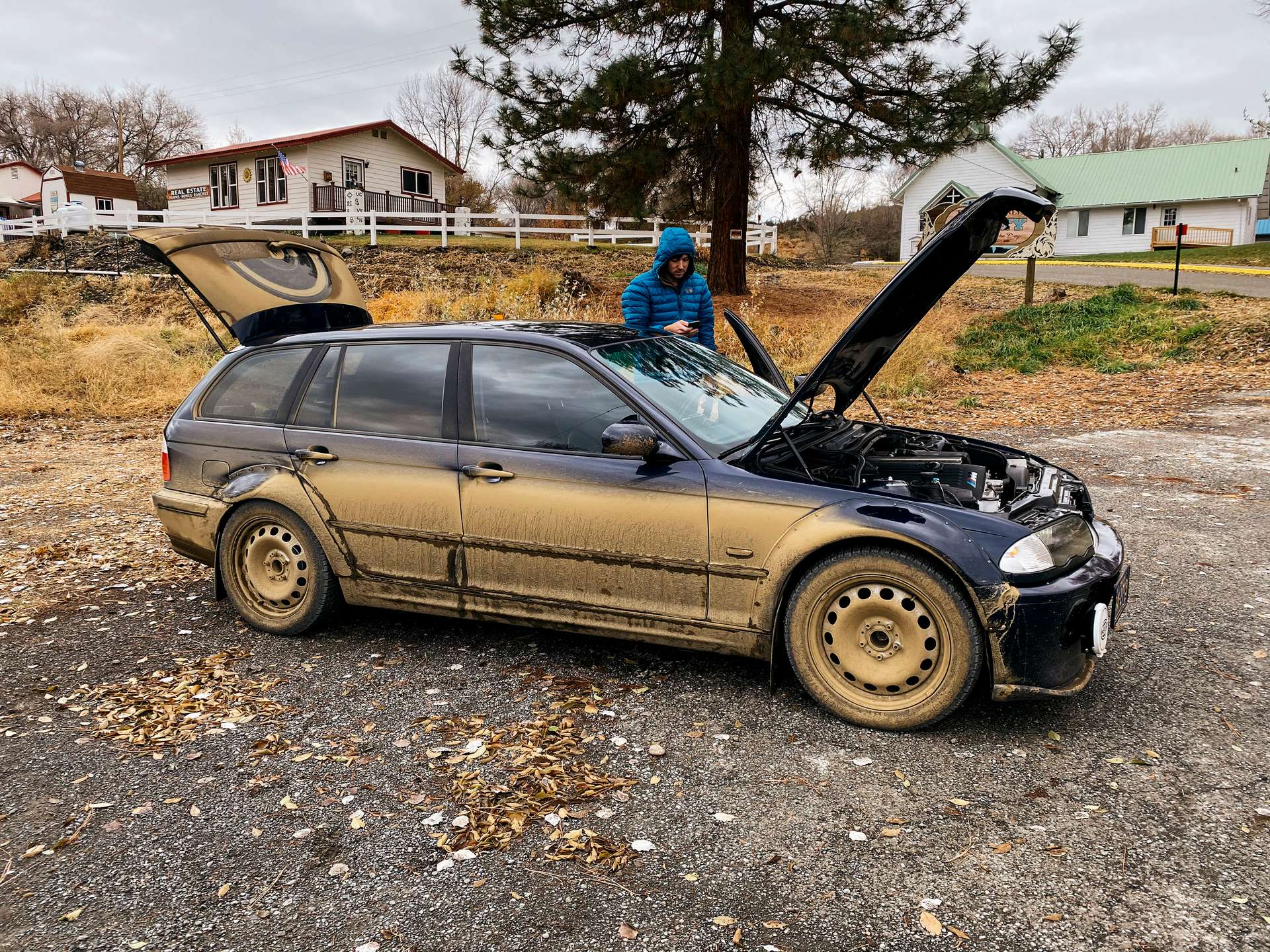
He recommended we inspect the oil filter for metal shavings. The S54 has a pretty ingenious oil filter setup—it's mounted on the front of the motor, easily accessible, and the filter itself is a paper that sits in a fixed metal housing hanging off the motor—there's no need to get under the car or destroy a metal filter to look inside. Upon inspection, the paper oil filter fibers looked clean.
11:02 AM
We reinstalled the oil filter and hopped back into the car to get out of the cold. Daniel spoke with his auto insurance company about roadside assistance, as well as with a few towing services. I snacked on peanut butter-filled pretzels and lamented letting my AAA membership expire a few months earlier. A tow to Portland would have been north of $1,000. On top of that, we might not have even been able to find a driver willing to take on the all-day job, and I was pretty openly hostile to the idea of riding three abreast in the cab of a tow truck for five hours during the height of the COVID-19 pandemic.
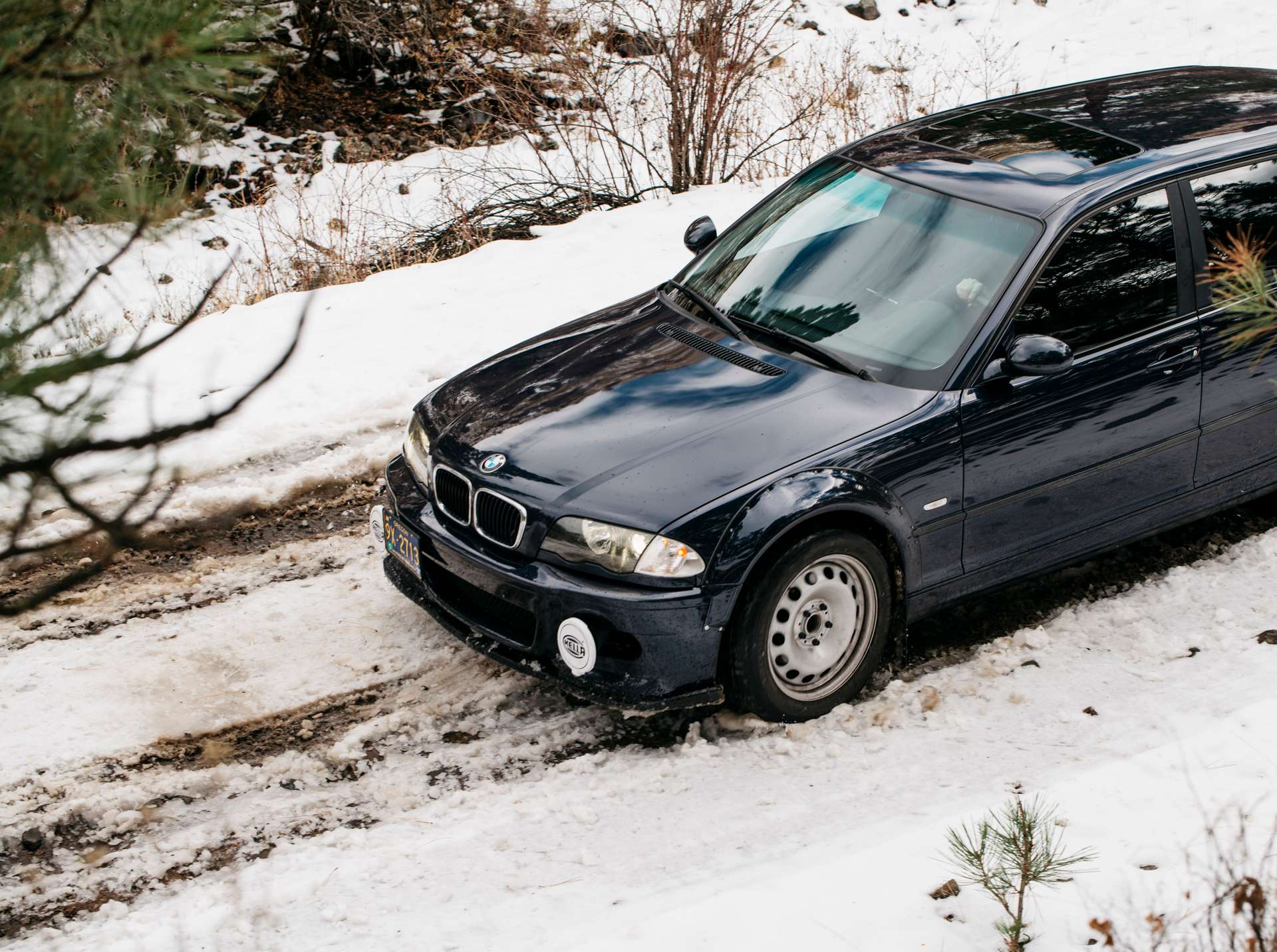
We sat there, running through a dozen unappealing scenarios, hoping a better one would come along. These involved some combination of Daniel's housemate driving out to get us, staying overnight in Dayville, requesting the expensive tow, or attempting to continue driving. We waited to hear back from Daniel's mechanic in Portland who was finding out if any of his car transporter contacts were available, but that didn't pan out. There was no magic bullet solution, and we knew we'd have even fewer opportunities if we waited until Sunday.
1:37 PM
By now, the wet mud that was sprayed over the car from South Fork Road had dried into a primer-like tan coating. Daniel decided we should try to drive our wounded wagon to the next town. From there, our towing options might open up, or maybe the car will give some indication that it was okay to press on. We hadn't found metal in the oil filter: if we could keep the revs low, and the throttle pressure at a minimum, how much more harm could it do?
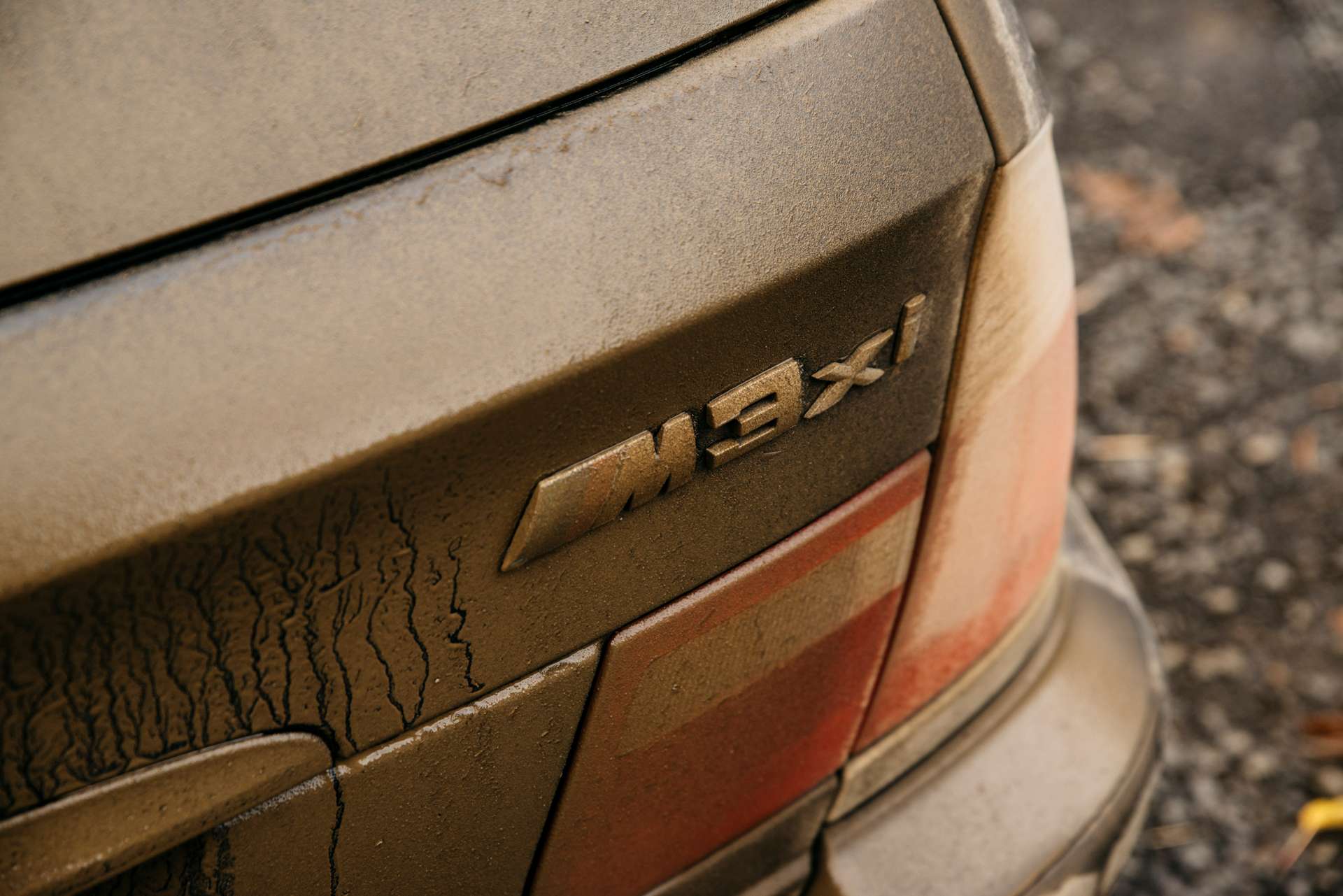
"Whatever it is, they're going to have to open up the motor," Daniel rationed. "At this point, it will be expensive regardless."
We fired it up and pulled onto US highway 26. It was good to be on the road again—the powerlessness we had felt for hours parked in Dayville was lifted, and we were steadily marching toward our destination. But civilization was a long way away, and the remoteness of our location became apparent: it was cold, we had no cell service once we left Dayville, and the sun was going to be setting in a little while.
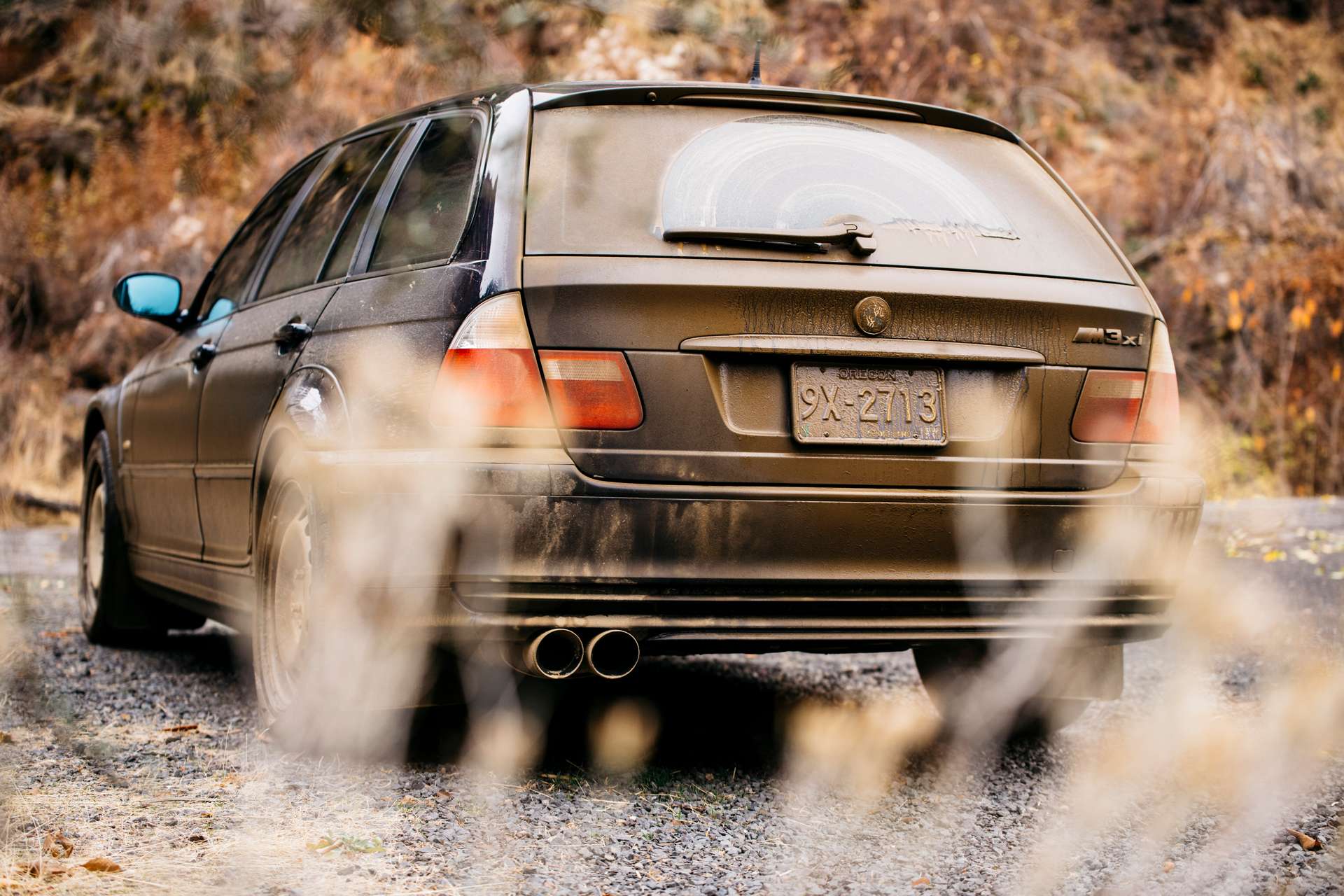
We continued to speculate about the condition of the engine. Despite the sounds, the oil temperature was okay, there was no smoke or leaks, and the check engine light remained unlit. In the past year, the whole car had been gone over so many times—everything, except the internals of the engine. Oil had been changed and tested, injectors flow tested, valves adjusted, VANOS maintained. Daniel had put 1,500 miles on it during the summer, all without any warning signs.
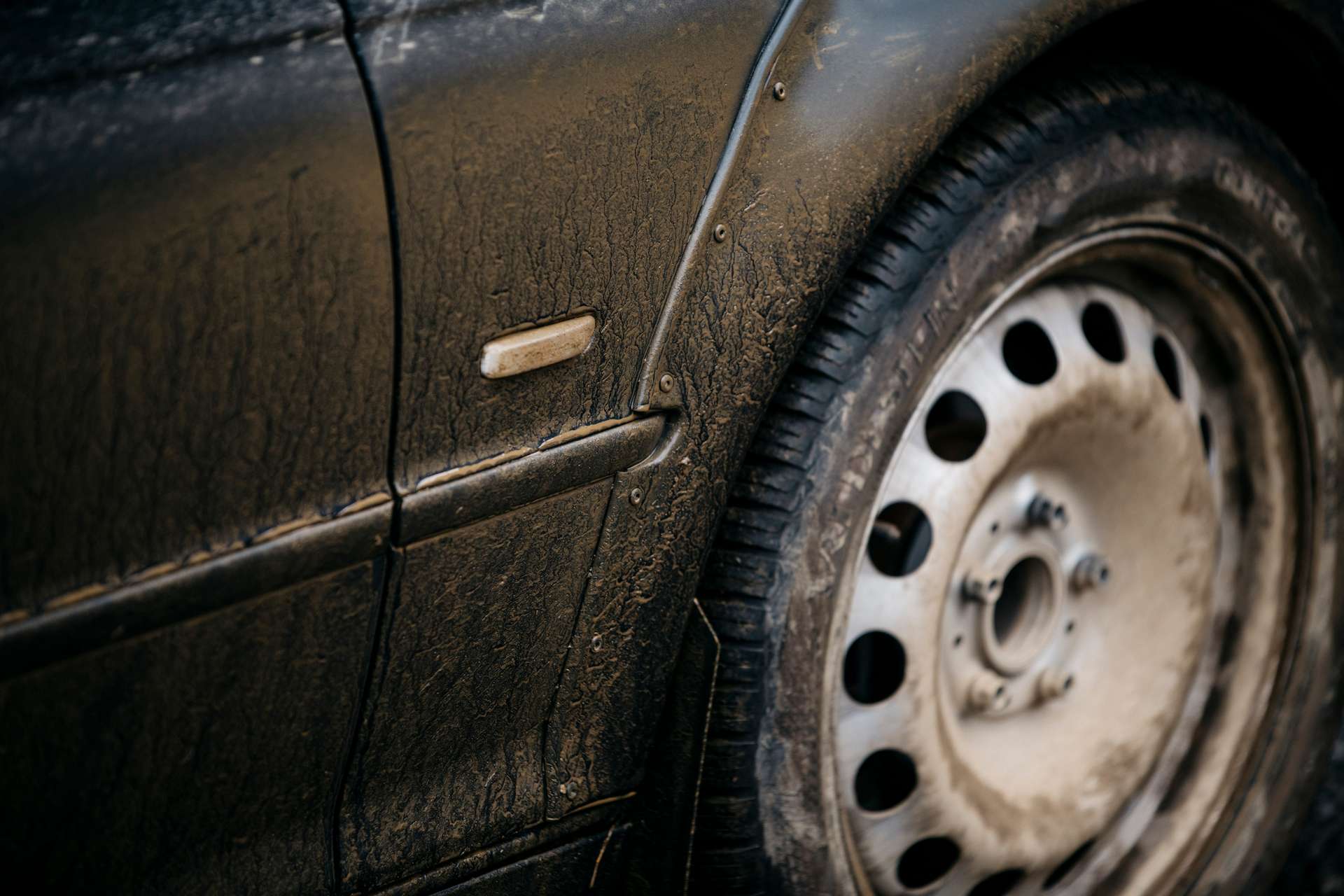
After 25 miles, the road began to climb. The metallic sounds from the motor grew angrier and drowned out our discussion. Did I imagine that the volume of the clattering was increasing, or did Daniel hear it too? We became quiet, listening as the car sounded like it was straining to advance uphill. After reaching Key Creek Summit (4,369 feet), we coasted down the mountain in neutral as long as we could, before rolling onto Main Street in Mitchell, Oregon (population 130). We were hoping that the car might give us a sign that it was healthy enough to go the distance. Instead, it signaled the opposite.
2:52 PM
We had gotten just 40 miles farther along. Daniel spoke to the insurance company again about a tow, and this time, gleaned a new piece of information: they would cover the cost of a tow for the first 20 miles, or to the nearest dealership of that make. In our case, the nearest dealership was BMW of Bend, and this detail was a game-changer. We arranged for the tow, found some food in Mitchell, and waited with the car while a truck was dispatched from Prineville, OR. For the first time, help was on the way.
6:05 PM
Our rescuers were a semi-retired couple hauling a gooseneck car trailer behind their Silverado heavy-duty. We helped load up the car in the darkness and then hopped into the backseat of the truck. It was a relief just to be moving again, without the worry and uncertainty that had consumed our last nine hours. The ninety-mile route to Bend took us over another mountain pass, this time with a lot more snow on the roads already, and more coming down heavily. Daniel made friendly small talk with the tow truck operators; I just sat silently looking out the window. I thought about how close we came to being stranded along this snow-covered road, at 4,500 feet in elevation.
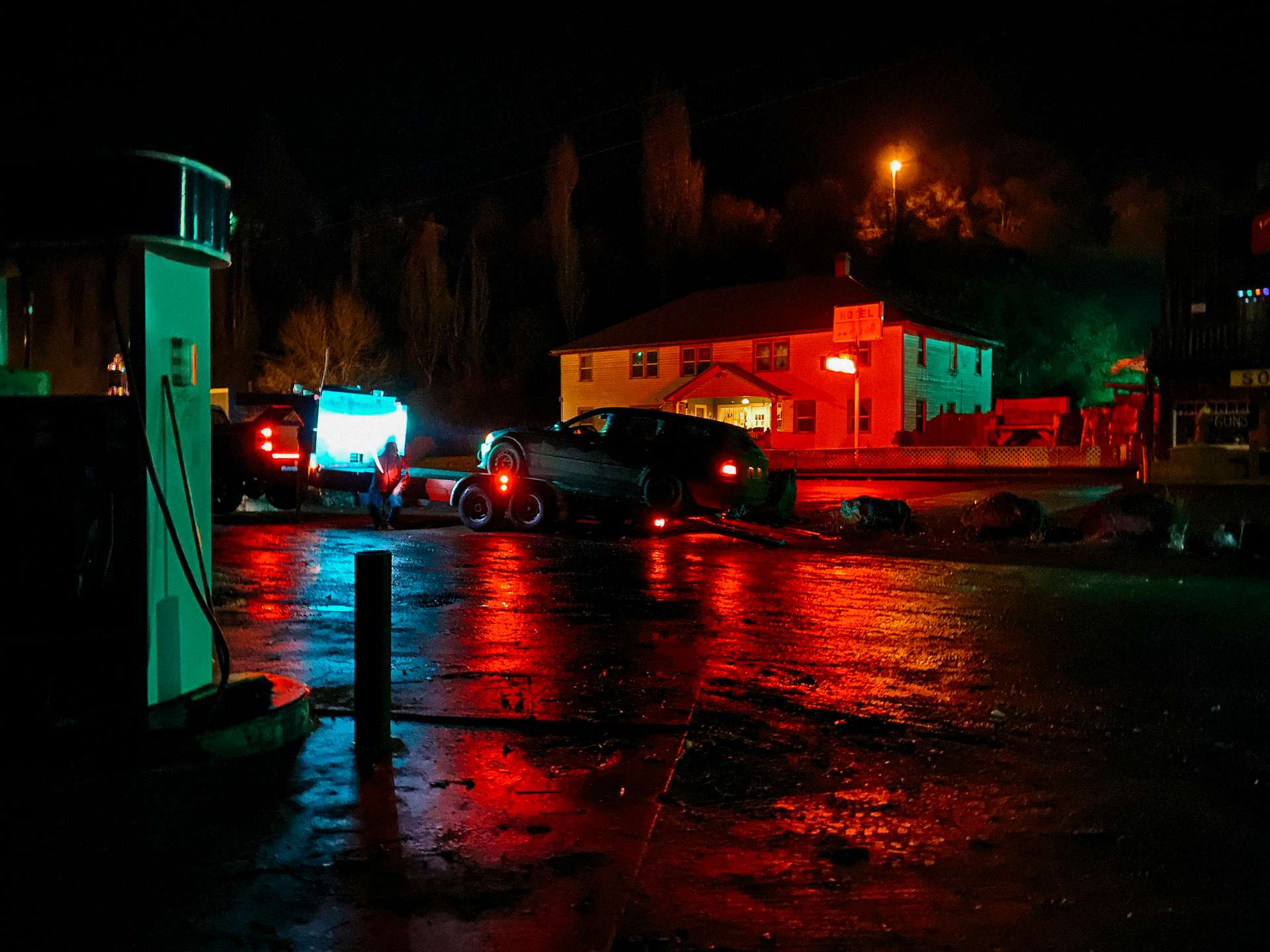
Central Oregon in November is brutal and unforgiving: it's cold, it's isolating, and the topography quashes all cellular reception. It makes you feel small for being so ill-prepared to cope with it and foolish for underestimating it.
9:15 PM
We made it to Bend in the pouring rain. Daniel's housemate had agreed to meet us at the dealer with his Land Rover. We transferred our gear and luggage from the wagon, dropped the BMW key into the dealer dropbox, and set off for a blissfully uneventful four-hour drive back to Portland.
The Reckoning
The following week, Daniel's mechanic arranged for a transporter to bring the car the rest of the way.
Back in Portland, the engine was pulled and dismantled, and an inspection showed spun bearings, cracked rods, and a damaged crankshaft. All-wheel drive BMWs have special oil pans that accommodate for the front axles. This oil pan came from a 330Xi, but the oil pump didn't fit correctly. The oil pump chain was digging into the pan, and the pickup tube didn't have enough clearance to supply oil properly. Eventually, the rod bearings succumbed to a compromised lubrication system—oil starvation.
Could this have been prevented? Dropping the oil pan on an AWD BMW is a hassle because the axle has to come with it, so it was never checked directly. The seller said that the rod bearings had been replaced before the sale, so Daniel didn't feel there was any reason for concern. Given the diagnosis, it's pretty clear it was just a matter of time until the rod bearings would fail due to oil circulation issues.
Unfinished Business
I calculated that we've done at least 11,000 road trip miles in Daniel's BMWs over the past few years, and we've never had a single mechanical issue except a convertible tonneau latch. Despite loads of preparation and all the right preventative maintenance, sometimes your number comes up. This time, it wasn't meant to be.
The plan for the car now is to rebuild the motor, go through everything else that can be found, and have it ready to pick up where we left off. Rhom Innovations in Portland will assemble the bottom end with new rod bearings and bushings, and send out the crank to be refurbished. The oil pan will be modified to give clearance to the oil pump gear and to have baffles. If necessary, a custom oil pickup tube will be fabricated.
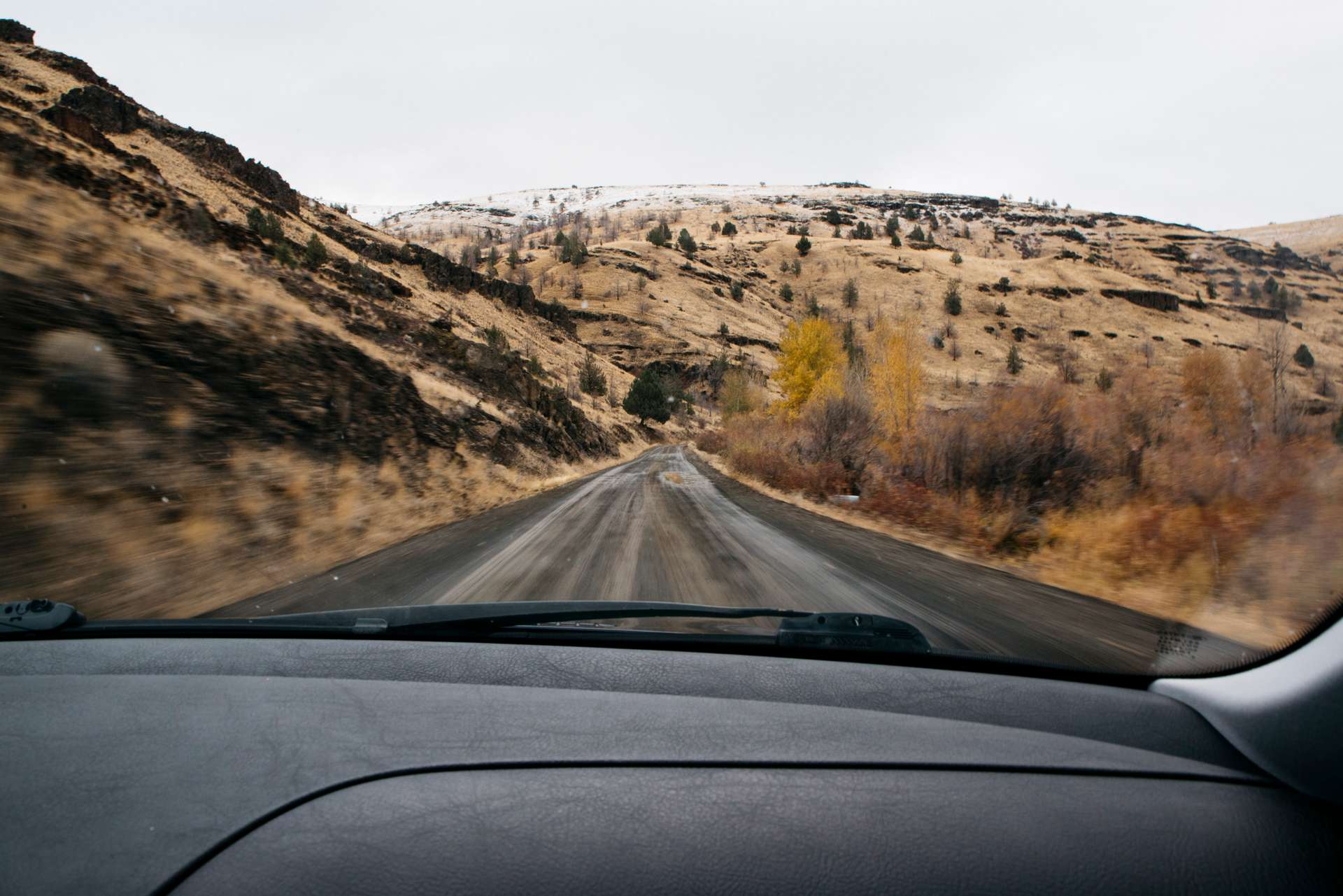
This trip was enough to get a taste of what the M3xi is about, and it's proof that the concept is sound. It's the perfect road trip tool: an M3 on-road, and a monster off-road, with room for weeks worth of clothes and gear, and a look that you can't take your eyes—or cameras—off of.
The M3xi Touring will come back stronger, faster, and better than ever, and I'll be ready to pick up where our eight-day road trip left off. Our journey would have taken us to several deserts, dry lakebeds, and mountains. Now more than ever, I'm determined to complete this trip in the M3xi adventure wagon. Quite simply, no other car will do.
Visit back here at https://www.fcpeuro.com/blog in the coming weeks to read part two of the M3xi journey through Oregon!

